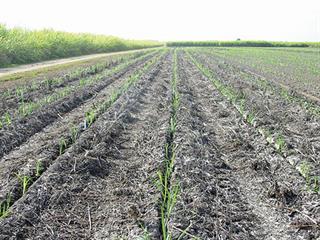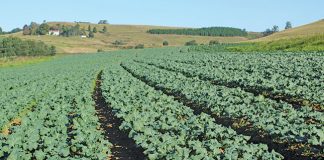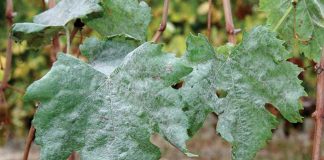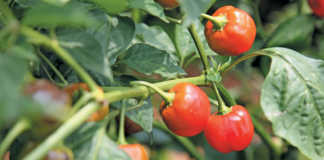
But a mere three years later, the land under sugarcane had dropped by 19 000ha, and total sugarcane production was 28 million tons. Average yield was 76t/ha in 2011, down from 86t/ha in 2008.
“Our sugarcane industry was going backwards,” says Dr Alan Garside of Agritrop Consulting. “We realised that the yield decline was due to the loss of the productive capacity of soil as a result of long-term sugarcane monoculture and how it was being practised.
“This process began back in 1970 after the government lifted the requirement that a significant portion of agricultural land had to be left fallow in any given year.”
View the SA Canegrowers Agricultural tour to Reunion Island photo gallery.
Since then, most sugarcane growers have eliminated fallow periods between plough-out and replanting.
“There was also a major reduction in the planting of legume break crops in sugarcane lands between production cycles,” explains Garside. “Over the subsequent years, all the high-potential soils were slowly depleted and the farmers were forced to also grow sugarcane on nearby lower-potential soils to maintain yields.”
One of the consequences of these practices was the increase in pathogens of sugarcane roots, and the plants were too stressed by the poor soil environment to fight these off effectively.
The Sugar Yield Decline Joint Venture (SYDJV) – established among a variety of stakeholders and led by Garside – determined that it was essential to address pre-existing sugarcane farming practices if the decline was to be urgently reversed.
New system
Garside stresses that the new sugarcane management system was developed for Australia is not a one-size-fits-all recipe for success but rather a system of basic principles that each sugarcane farmer could adapt to their particular operation to benefit from sustainable farming and increased sugarcane yield. The system entails:
- Planting a leguminous break crop between each sugarcane crop cycle.
- Eliminating indiscriminate heavy machinery travel across sugarcane land.
- Matching machinery and implements’ wheel spacing to sugarcane’s row spacing.
- Doing away with tillage as it yields no benefits if machinery traffic is managed properly.
- Leaving sugarcane trash and break crop residues on the soil surface to promote the soil’s organic matter content.
How it works
An example of how this system can be implemented is to:
- Form permanent sugarcane beds with permanent wheel tracks between them.
- Establish legumes on the beds.
- Use a double-disc opener to plant the sugarcane directly into the legume residue.
- Control traffic for crop management during the growing periods.
- Control traffic during the harvest and haul-out periods.
- Direct drill legumes into chemically killed sugarcane at the end of a sugarcane cycle,
Start again from step three.
READ MORE: Sharing sugarcane knowledge
Great potential
“This new sugarcane farming system is showing great potential in Australia,” says Garside. “While it’s based on principles that have individually been shown to improve production, using them in combination will see a major improvement in productivity, profitability and sustainability of the Australian sugar industry.
“It permits the advantages of mechanisation to be realised without the disadvantages. There’s no reason why it can’t be adopted in other countries’ sugar industries.”
Find out more about Australia’s sugarcane industry in the 5 September issue, P.64













